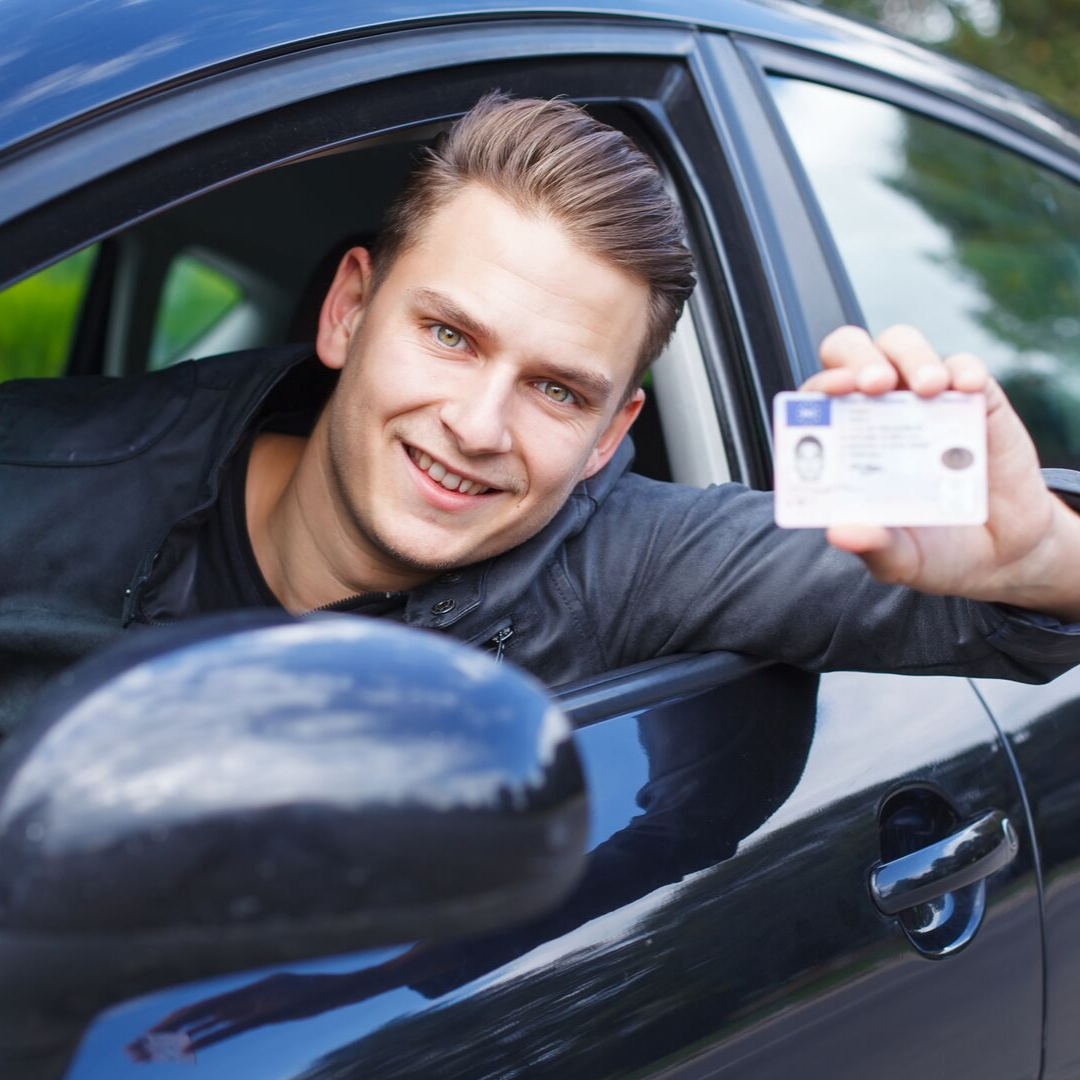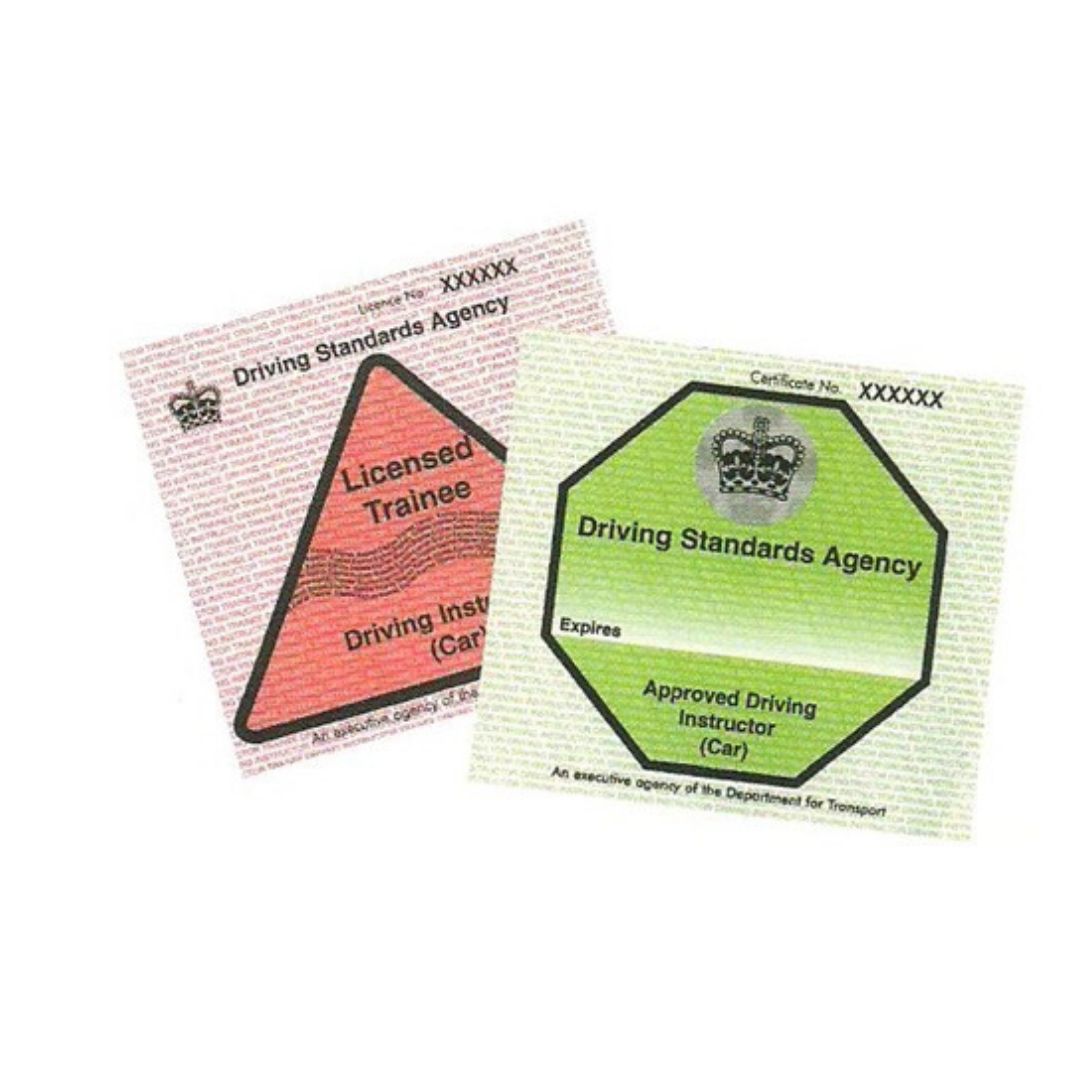Being a driving instructor comes with great career benefits such as being your own boss and working whenever you want but there are factors you must consider. Legally, driving instructors are required to have insurance but driving instructor insurance can be confusing. So, Get Licensed Driving School is here to help and clear up any confusion you might have over a driving instructor’s insurance.
The law regarding driving instructor’s insurance:
All driving instructors in the UK are legally required to be insured. But the insurance that driving instructors have is not the same as standard car insurance for other drivers. Instructors have to make sure their insurance policies cover the features that meet their unique requirements.
The difference between standard car insurance and driving instructor insurance:
Standard car insurance policies will cover drivers for domestic, social and personal use. A driving instructor’s insurance policy needs to cover additional factors. As a driving instructor offers the service of driving tuition this will require a hire and reward cover. Due to the high-risk associated with learner drivers; this means driving instructors will need more accident coverage than other drivers.
Hire and Reward: This is a class of insurance which allows you to legally carry other people’s goods in return for payment.

Apart from additional accident coverage, driving instructors need to keep in mind their car is their livelihood. If your car breaks down or is faulty then you cannot teach your students, and this is why most instructor insurance policies include dual controlled car covers and multi-vehicle coverage.
What insurance does a Potential Driving Instructor need?
A Potential Driving Instructor (PDI) also needs to have insurance to qualify and become an Approved Driving Instructor (ADI).
When you are training to become an ADI, there are three tests you must pass to qualify:
1st test: hazard perception and theory questions (multiple-choice).
2nd test: eye test, vehicle safety questions, and driving ability test
3rd test: testing your instructional capabilities and techniques
As the third test involves you instructing a learner driver, you will need insurance that covers you driving with a learner driver in your car.
Mastercover offers a 1-day driving tuition insurance policy for part 3 of the ADI test. You can get a quote and purchase the insurance here.
Types of Driving Instructor Insurance Cover Explained
Any Driver Cover – Your policy needs to be issued on an any driver basis; this allows you to teach any licensed driver on the road regardless of their previous driving experience or risk factors
Replacement Dual Control Vehicle Cover – As a driving instructor, your car is the backbone of your business. Most standard car insurance policies will only offer you a non-dual controlled car in the event of a non-fault incident, meaning you cannot continue working. Driving insurance providers however will provide you with a dual controlled vehicle in the event of a claim.
You should find a provider who will supply you with a guaranteed dual control replacement car within 24 hours so you can continue teaching and sit any pre-booked driving tests. For example, Quote Me Today aims to get you a replacement car within 24 hours dependent on geographical location. You should also keep in mind how long you may need this vehicle for as many providers will only supply a vehicle for a limited period so try to find a provider who offers unlimited cover.
Negligent Tuition Cover – This cover extends your driving instructor insurance policy to insure you and any driving instructor engaged by you to whom you have provided a vehicle which is insured under your policy, for your/their legal liability to pupils whilst driving instruction is being provided.
Driving Off-Road Driver Aged 14+ – There are driving instructors who wish to teach learners how to drive off-road. This is usually because the learner driver is too young to teach on road or because they’re not confident enough on main roads. In either scenario, you will need driving off-road cover. This cover will allow you to teach pupils off-road who are aged 14 and over.
Comprehensive Driving Other Cars – If you are an instructor who carries out fleet driver development training you may be required to carry out a demonstration drive in your client’s vehicle. This type of cover is not usually available under a standard private car policy and may not be available under certain driving instructor insurance policies. If you will need to drive other cars, you must ask for comprehensive driving other cars cover which will meet your liabilities should you be involved in an incident in your client’s vehicle. Cover only applies whilst carrying out the demonstration drive.
Cover for Hire & Reward – Because as a driving instructor you will be receiving payment for giving lessons whilst carrying your client in the vehicle this requires hire and reward to be included within your policy for the purpose of driving tuition and test.
Modified Vehicle Cover – As a driving instructor you will need to modify your vehicle and add some features which will include:
Dual controls
Additional speedo
Additional mirrors
Signwriting
Disabled driving equipment
Most standard car insurance policies will class these as modifications and therefore will be unable to provide you cover. So, you must mention these modifications to your insurance provider so that they can note these on your policy and provide cover suitable for your needs.
Personal Accident Cover
You don’t only need coverage for your car but also for yourself. You need to invest in a cover that will protect you against anything unfortunate happening. Personal accident cover does not only protect you when you are on the road, but it also covers your passenger – whether they’re your students, friends or family.
Banned/Convicted Drivers Retaking Tests Cover
As a driving instructor, you might find yourself giving driving lessons to banned or convicted drivers to help them work towards retaking their test. To do this, you need to make sure have this additional cover.
Windscreen Cover
Windscreens are very prone to damage. With the right cover, you will be able to get your windscreen repaired or replaced if it becomes damaged. Some policies might apply this even to your windows and sunroofs.
Breakdown Cover
With the risk of road accidents and faulty parts hanging over your head at any point, you must have breakdown cover. If the worst does happen, this cover means that you’ll get roadside recovery and assistance in repairing your car and getting you home safely.
Gap Insurance
If your car loses value due to theft or an accident, most insurers will only pay you the market value of your car at the time of loss. This will usually not leave you with enough time to buy a new car. Gap insurance will protect and cover your car from losing value.
Public Liability Insurance
You need to protect yourself and your business in the event of someone looking to sue you or your business for negligence that has caused injury or property damage. For this, you need to look for a policy that includes public liability insurance.
Making a Claim
When looking around for the right driving instructor insurance policy, make sure to look at their process for making a claim. Most providers will have incident management services on hand to handle your claims. Once you have reported an incident, they will work with your insurer to deal with the issue. While this is happening, you will be given a replacement dual control – if this is covered by your policy – until your vehicle has been repaired.
Factors that affect the cost of Driving Instructor Insurance
As you have just read driving instructor insurance includes extensive features and these additions affect the price of your policy. Apart from the features included in your driving instructor insurance policy, the following factors will also affect the cost.
The type of instructor you are
Potential Driving Instructors (PDIs) have to go through a six-month probationary period while they are training. If you are looking for an instructor insurance policy while you are training, you will find that premiums are higher than usual. This is because PDIs are still in training and therefore have a high-risk factor. Approved Driving Instructors (ADIs) will have lower premiums due to their full qualification and experience.
Your car
As with standard car insurance policies, the type of car you’re driving will affect the cost. Your engine size and the transmission of your car can also be a factor in the cost of your policy. Manual cars are more prone to damage than automatic ones and this can make them more expensive to insure.
Your location
As with standard car insurance, location can be a big factor in the price of your driving instructor insurance policy. If you live in an area that has a high crime rate this will result in a higher risk of the insurance company having to pay out. Location is not something that can be easily changed but it is something you should keep in mind.
Full-time or part-time
Driving instructors may work full-time or part-time and your policy will be tailored to that. Your policy will take into account how many hours you work and what level of tuition you provide to learner drivers.
Cover type
If you choose the most comprehensive policy, you can find – with every specialist cover – the cost of your insurance will be far higher. So, make sure to pick the policy that fits your needs and budget. Also, make sure to shop around for the best-priced policy for you.
What to look for when choosing your insurance provider

Expense
As we’ve explained driving insurance policies can be very expensive. Although driving instructor insurance policies can come at a hefty price, if you pick a policy that’s basic and cheap you might end up regretting it. You could also regret picking a policy that has every type of cover, but you might not need it and this turns out to be a waste of money. Pick an insurance policy that not only fits your budget but your needs.
Covers
When you are looking for the right insurance policy for you, look at the covers you feel are the most necessary e.g. Comprehensive Driving Other Cars. When you do this you are making a better decision when choosing between different insurance providers and policies.
Payment options
As we’ve already discussed, it’s important to factor in the price of the insurance policy. Apart from just taking into consideration how much the policy will cost, also look at how you will pay for your insurance. Will you have to pay in one lump sum annually or will it be in monthly installments.
Do you have enough money to choose an annual payment option or will you be more suited to pay in monthly installments? Some insurance policies are paid off bi-annually. So, make sure to check the payment options provided and what suits you and your financial situation best.
Which insurance provider should you choose for your Driving Instructor Insurance?
Towergate Insurance

Towergate Insurance provides flexible cover for driving instructors which are tailored to your specific needs. Towergate Insurance also provides cover for Approved Driving Instructors, Potential Driving Instructors, driving schools, commercial tuition fleets, and dual control contract hire vehicle operators. Some of the key features Towergate Insurance provides include; Any Driver Cover, Negligent Tuition Cover, Replacement Dual Control Vehicle Cover and Driving off Road Aged 14+.
CLICK FOR A QUOTE and for more information on their insurance policy click HERE.
Instructor Cover Plus

Instructor Cover Plus is a driving instructor insurance broker who can source the exact policy you’re looking for. Instructor cover plus can also provide the following optional covers; Breakdown Cover, Excess Waiver Cover, Replacement Vehicle Cover, and GAP Insurance.
CLICK FOR A QUOTE and for more information on the insurance they provide CLICK HERE.
Mastercover

Mastercover has been established for over 25 years so are a trusted name within the driving instructor industry. As an insurance broker, Mastercover uses major insurers and Lloyds syndicates that include Aviva, Ageas, KGM, and Markerstudy. They can help you find a policy whether you are looking for ADI, PDI or driving school cover.
CLICK FOR A QUOTE and find out more information about their insurance policy HERE.
Are you a Driving Instructor who wants to join Get Licensed Driving School?
If you’re a Driving Instructor who wants to grow your business, then you should join Get Licensed Driving School today. Create your profile with Get Licensed Driving School and let us take over the rest! Register with Get Licensed Driving School HERE.






















